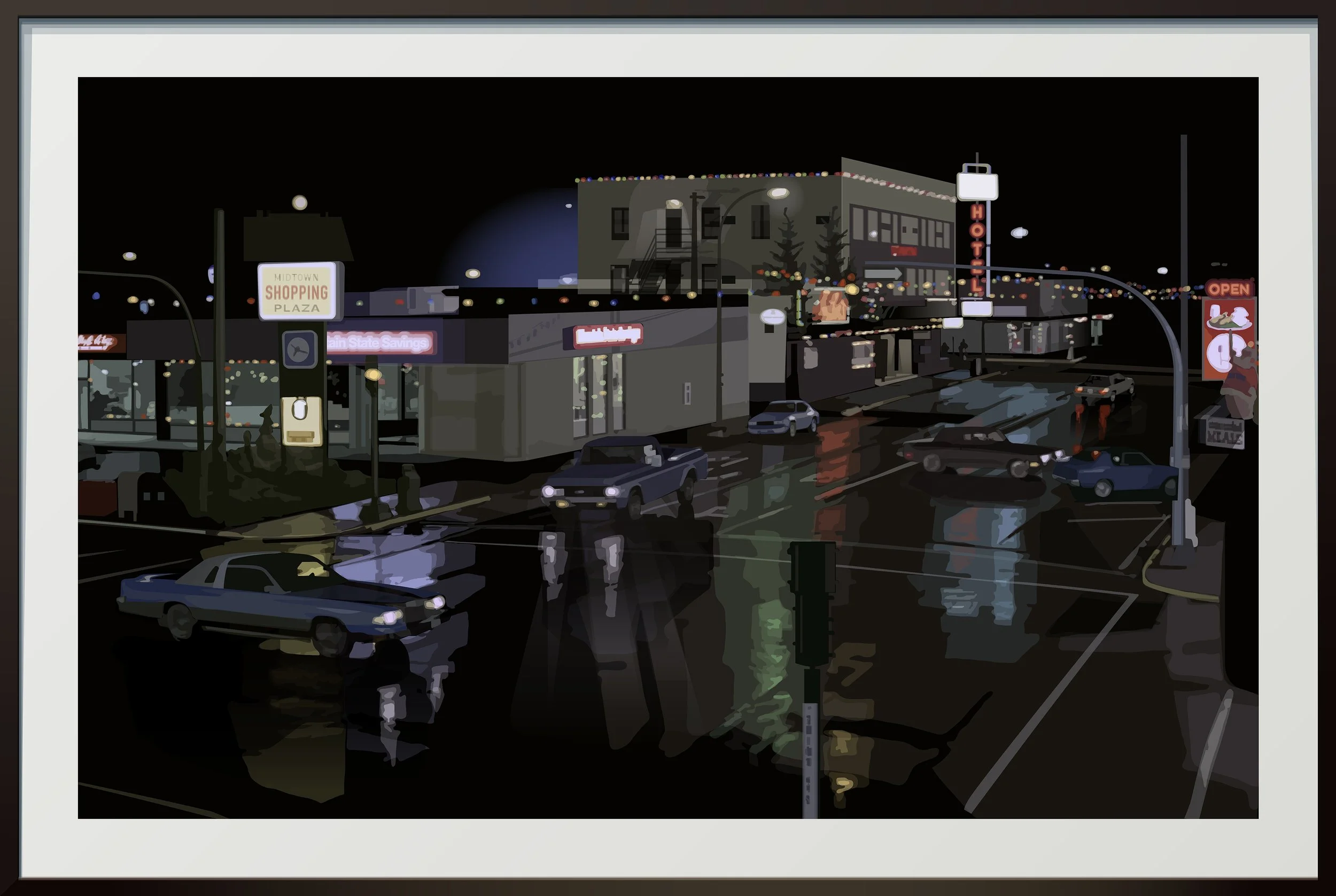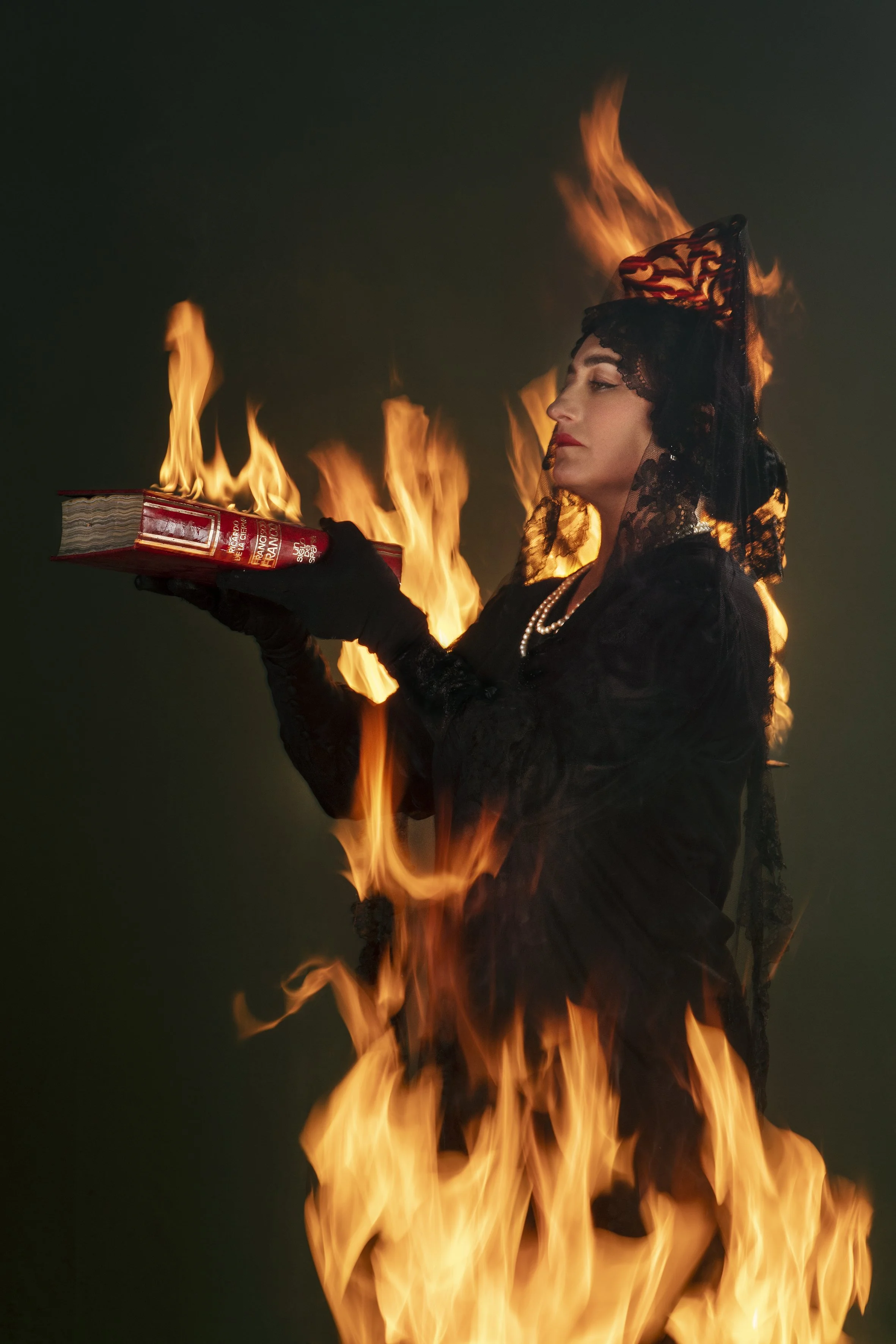Parallel Lines: Nathalie Vallois
An American Landscape - For your own safety, © Alain Bublex Courtesy Galerie GP & N Vallois, Paris, 2015
Impression aux encres pigmentaires laminée Diasec sur aluminium, 130 x 194 x 6 cm
F.B. The language of photography is still among the most contemporary, despite the growing popularity of other digital arts. What forms of photography do you find particularly exciting in our time?
N.V. What I am excited about in art is the process of contemporary questioning. Our gallery in Rue de Seine works with more than thirty-five artists spanning from the 60s to this day who use photography not as photographers but rather as artists trying to express their questionings or explore their being. I personally do not have a particular attention towards photography as I rather prefer to associate such language with others in the realm of contemporary art.
Furbee, © William Wegman, 2015, Tirage numérique, 111,5 x 86,5 cm
© William Wegman Courtesy Galerie GP & N Vallois, Paris Edition de 7 + 2 E.A.
F.B. Nowadays more and more artists are working in the field of mixed media, the ones you define as artistes plasticiens. Given that you represent many artists working with photography as a means, how have you seen the relationship of photography with other languages evolve in the art world during your career?
N.V. Again, it is a question of subject. For example, we are working with the artist Alain Bublex who has spent all his life with a photographic camera, taking thousands and thousands of photos of the landscape. And though he has done multiple exhibitions showing just photographs of the American landscape, most times he is transforming the image. He is stating that a particular scene which might look exactly like an American city is actually not in the US but rather in a fictive city in Canada. Or again, he transforms images of banale Parisian and American suburbs by drawing or painting on the photograph; in such way, he might portray the Mount Fuji right next to the Eiffel Tower. The resulting sensation is a combination of factors: photography proves that such place does exist and the artist has witnessed it through the act of taking the photograph, but then the subject can be totally transformed and lead the viewer somewhere else. This is a way to see photography as something special, as the artist has to be there in order to portray such moment and such physical situation. Only then, such situation might be transformed.
F.B. In a sense, photography is the medium that best proves the existence of specific realities and moments. How has the role of photography as a testimony of our reality evolve in the art world with the advent of social media?
N.V. Not just through social media but rather through the whole Internet, photography has gained even more importance as a language to represent who we are. On another note, in the occasion of gallery exhibition visitors are taking pictures of the exhibited art. Photographs of artistic works are completely new. They are proof of the new idea of representing art. Around ten years ago photography was much more important as a medium for artists than it is now, and that becomes clear at art fairs as well: the percentage of photographs is largely lower than it used to be, with painting ruling the scene in the last years. While ten or fifteen years ago fairs were submerged by photographs, recently artists are using such language less and less. Photography is still used in the art system to present art and represent reality on shows, but not much more.
F.B. This is an interesting testimony. Just when photography seems to have gained a reputation and a credibility as an art language in the system, with collectors giving more credit to such language, you are bringing up a reduced importance of this medium for artists. How has the perception collectors have of photography evolved with time?
N.V. In fact, some years ago the amount of photography collectors were many more – and once again, I am referring to photography used as a medium towards artistic purposes. Now it is becoming very clear how less and less collectors are specifically oriented towards photography. Of course, some are only interested in photography and will always look exclusively for that language. That is part of why we participate in Paris Photo, where these collectors come. Though the gallery has grown immensely in these years, the collectors focused on photography among our clients have decreased. In fact with COVID artists have been forced in their studios, they could not photograph reality out there but they could paint. They often could not sculpt because they needed materials and assistants, but they could paint. For such reason, painting has gained even more importance.
No apagues mi fuego, déjame arder III, 2020, Photographie couleur, © Pilar Albarracín
187 x 125 cm Edition de 5 + 1 E.A.
Courtesy Galerie GP & N Vallois, Paris
F.B. In a sense the times we are living in are quite complicated in a psychological sense as well, and such difficulty might be pushing even more towards the use of multiple media as a way to encompass our sensations in all their nuances.










